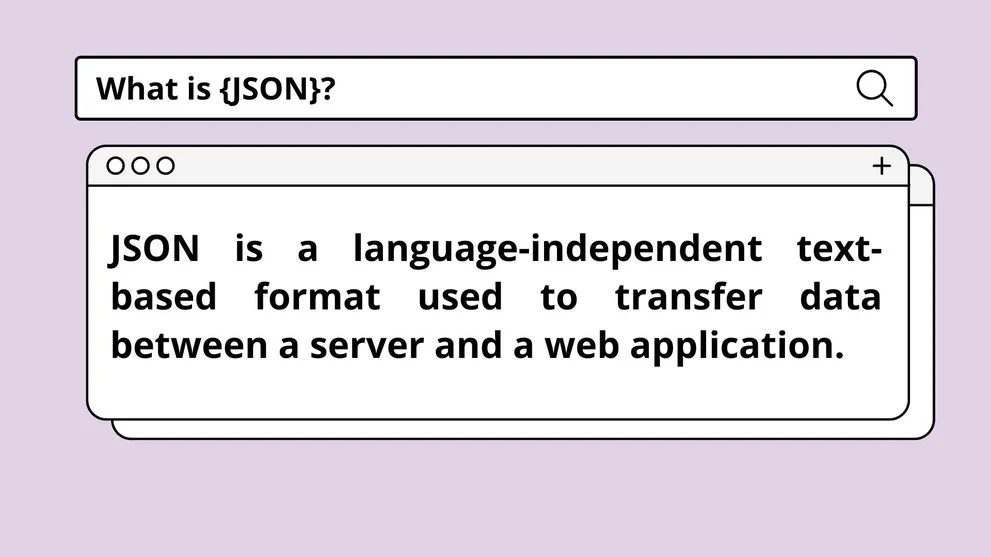What is JSON?
Understanding the Basics of JSON

In this blog we will look into
The Need for Inventing JSON
JSON (JavaScript Object Notation) has become a ubiquitous data interchange format, and its invention was a necessary response to the evolving needs of the digital landscape. As the internet and technology advanced, the demand for a lightweight, human-readable, and machine-readable data format grew exponentially.
Why JSON has become the ideal choice
JSON’s simplicity and flexibility have made it an ideal choice for a wide range of applications, from web APIs to configuration files. Its key-value pair structure allows for easy parsing and manipulation, reducing the complexity of data transmission between different systems and programming languages. Moreover, JSON’s compatibility with JavaScript, one of the most widely used programming languages for web development, has contributed significantly to its widespread adoption. This native support has streamlined the process of working with data in web applications, enhancing efficiency and reducing development time. The format’s ability to represent complex data structures, including nested objects and arrays, has made it particularly suitable for modern, data-intensive applications. This versatility has led to JSON’s integration into numerous databases, enabling more efficient storage and retrieval of structured data.
Furthermore, JSON’s lightweight nature has proven crucial in the era of mobile computing and IoT devices, where bandwidth and processing power are often limited. Its compact format allows for faster data transfer and processing, improving overall performance and user experience across various platforms and devices.
Major Tech Players Have Adopted JSON
Today, JSON is widely adopted by major tech players, including Google, Amazon, and Microsoft, who have integrated it into their platforms and services. This widespread adoption is a testament to the value that JSON brings to the table, as it enables seamless data exchange and integration across a variety of systems and applications. Its simplicity and flexibility make it an ideal choice for developers working on diverse projects, from small-scale web applications to large enterprise systems. JSON’s lightweight structure allows for faster data processing and transmission, which is crucial in today’s fast-paced digital landscape.
How JSON Works and Why It’s Needed
Moreover, JSON’s compatibility with JavaScript, one of the most popular programming languages for web development, has further solidified its position as the go-to data format. This synergy has led to the creation of numerous JSON-based tools and libraries, enhancing developer productivity and streamlining the development process. The rise of RESTful APIs and microservices architecture has also contributed to JSON’s popularity. Its human-readable format makes it easier for developers to debug and troubleshoot API responses, while its compact structure helps reduce bandwidth usage in mobile and IoT applications.
Future Proof Solution for Evolving Technologies
As the demand for real-time data exchange continues to grow, JSON’s efficiency in handling complex data structures positions it as a future-proof solution for evolving technological needs. Its ability to represent hierarchical relationships and support for various data types makes it versatile enough to adapt to emerging trends in data management and analysis.
At its core, JSON works by representing data in a hierarchical structure of key-value pairs, arrays, and nested objects. This structure allows for the efficient and organized storage and transmission of complex data, making it an ideal choice for applications that require the exchange of large amounts of information.
The need for JSON is clear – it provides a standardized, lightweight, and human-readable way to represent and exchange data, enabling developers and organizations to build more efficient, scalable, and interoperable systems. As technology continues to evolve, the importance of JSON in the digital landscape will only continue to grow.
In conclusion, the invention of JSON was a direct response to the limitations of previous data interchange formats. Its widespread adoption and continued relevance in the tech industry underscore the importance of creating innovative solutions that address the evolving needs of the digital world.